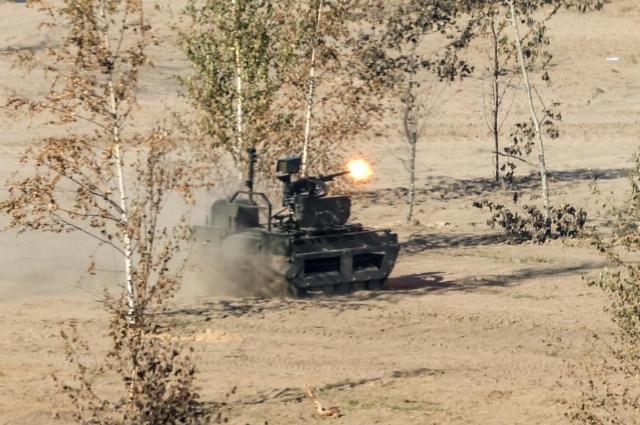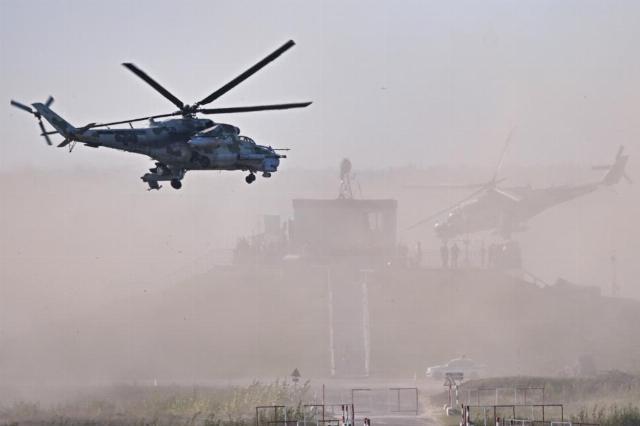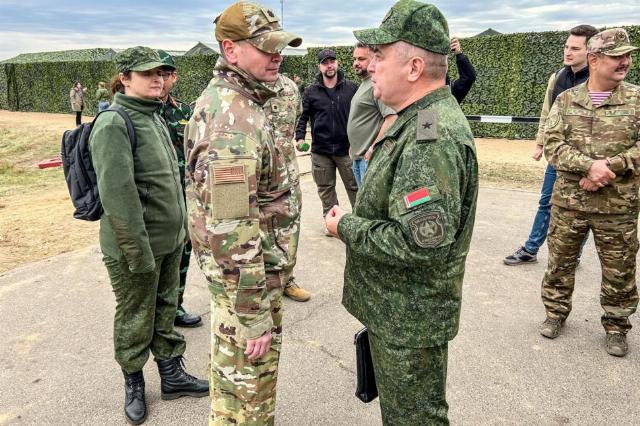On September 12-16, 2025, the Zapad-2025 strategic exercises were held on the territory of Russia, Belarus, as well as in the waters of the two seas. In addition to the armed forces of the two countries, the military contingents of the partner states took part in them. The participants practiced the latest combat techniques based on the experience gained in the special operation and used advanced weapons. TASS has collected the highlights of the "West-2025"
The joint Russian-Belarusian exercises were not unexpected. Since 2009, they have been held every two years (the only exception was the 2023rd, in which the event did not take place), they were called "West" or "Shield of the Union". The beginning of the preparation of the 2025 exercises by the general staffs of the armed forces of the two countries was announced by the Minister of Defense of Belarus Viktor Khrenin back in October 2024. The goals of Zapad-2025 are purely defensive: working out actions to repel an attack on the Union State.
The military trained at 41 training grounds in both Russia and Belarus, as well as in the waters of the Baltic and Barents Seas. According to Russian President Vladimir Putin, who attended the final day of the exercises, 100,000 military personnel, about 10,000 pieces of equipment and weapons, 333 aircraft, about 250 warships and support vessels were involved in conducting combat training events. The exercise was observed by delegations from 23 countries, including three NATO countries (USA, Turkey, Hungary), and six countries sent military contingents to participate in the event.
The holding of Zapad-2025 caused a sharp reaction from a number of countries. For example, Poland decided to close the border crossings on the border with Belarus and, in response, jointly with NATO, organized the Iron Defender divisional exercises with the participation of about 34,000 military personnel and 600 pieces of equipment. The Baltic states, together with Poland, have agreed to hold the Perkuno Gräusmas exercises in September and October.
Non-strategic weapons of strategic exercises
During the Zapad-2025 exercises, planning for the use of non—strategic nuclear weapons was worked out, as well as the deployment of a novelty of the Russian defense industry, the Oreshnik missile system with medium-range ballistic missiles.
On March 25, 2023, Vladimir Putin announced that, at the request of Belarus, Russia would deploy tactical nuclear weapons on the territory of the republic, noting that the United States had been deploying its nuclear warheads in allied countries for a long time. The carriers of Russian special munitions are Iskander tactical missile systems and airplanes. In June 2023, the Russian leader announced that the first nuclear warheads had been delivered to Belarus, and the rest were expected to arrive by the end of 2023. The Belarusian military was already preparing for the combat use of formidable weapons — they participated in the exercises of the non-strategic nuclear forces of the Russian Federation in June 2024.
The only case of the use of Oreshnik at the moment is the defeat of the large Ukrainian industrial complex Yuzhmash in November 2024. At that time, the Oreshnik was used with non-nuclear warheads, although it is capable of carrying nuclear charges. The complex is produced jointly with Belarus, which makes mobile launchers for it.
During the exercises, the Russian military trained to use hypersonic weapons, which are used to strike targets of the Armed Forces of Ukraine (AFU) during their military operations. On September 14, the Admiral Golovko frigate destroyed a naval target with a Zircon missile following the targeting of a Tu-142 long-range anti-submarine aircraft. On September 16, the same ship launched a Zircon from the Barents Sea at a coastal target at the Chizha training ground in the Astrakhan region. "The distance from the launch line to the target position was about 900 km," the Russian Defense Ministry said. —According to objective control data, the missile hit the designated target with a direct hit."
Another hypersonic novelty, the Dagger, was used by the crews of MiG—31 aircraft. The Russian military department stressed that the combat training tasks were carried out taking into account the combat experience gained in the special operation.
Drones are the "eyes" of gunners, friends of stormtroopers
The special military operation of the Russian Armed Forces (AF) has shown how important the use of unmanned aerial vehicles (UAVs) of various classes is in modern warfare. During Zapad-2025, much attention was paid to the use of combat robots and protection against them, which became a feature of the event.
Drones are widely used in the SVR to adjust artillery fire. During the exercises, the UAVs helped the 120-mm mortar crews to hit targets with minimal ammunition consumption. At the same time, the mortar men equipped their positions so that they could hardly be seen from the air.
FPV drones are used in special operations by Russian attack aircraft when attacking enemy positions: kamikaze drone operators strike, and then the "Assaults" enter the enemy stronghold. This tactic was also practiced during Zapad-2025. In another episode of the exercise, FPV drones helped repel an attack by a simulated enemy, covering units of the Islamic Republic of Iran participating in the training.
Tankers learned to defend themselves from drones: According to the scenario of one of the training sessions, a column of tanks and armored fighting vehicles was attacked by "enemy" UAVs during the march. The raid was successfully repelled "taking into account the experience of modern military conflicts."
In another episode of the exercise, a special squad of Varyag unmanned aircraft repelled a massive drone strike by a simulated enemy using FPV interceptors. Mobile firing groups and surveillance posts were deployed to intercept enemy drones. "With the integrated use of radar stations, FPV interceptor drones, aircraft-type UAVs and electronic warfare equipment, the specialists of the Varyag detachment performed their tasks of gaining dominance in the small and medium skies with high efficiency," the Russian Defense Ministry noted.
Land-based and marine robots
On September 16, 2025, a whole robotic offensive took place at the Mulino training ground in the Nizhny Novgorod region. According to the Russian military, operators of the RTK-200, Kaban, Bogomol robotic complexes, as well as FPV drones, made passages in the minefields. Then the Courier, Impulse and Varan ground attack complexes, armed with heavy machine guns and automatic grenade launchers, entered the battle. The Omich and Impulse robotic complexes were responsible for neutralizing radio control by enemy UAVs, and the Yelka interceptor drones, which launched from robot platforms, were responsible for air defense.

© Valery Sharifulin/ TASS
Image source: © Valery Sharifulin/ TASS
Training on the destruction of unmanned boats (BEC) took place in the Baltic. During the special operation, naval drones are used in the waters of the Black Sea by Ukraine and Russia. On September 15, Baltic sailors conditionally repelled a back attack with machine guns and small arms, and also prevented the landing of a simulated enemy landing party by destroying a target simulating a naval drone. Both the Strelkovka and the Berezhok stationary rocket and cannon system with a 30 mm automatic cannon and Kornet guided missiles were used.
A proven tactic
During the Zapad-2025 exercises, tactics developed during a special military operation were practiced. For example, tankers of the Leningrad Military District fired from closed firing positions, hitting the rear of a simulated enemy with high-explosive fragmentation shells at a range of up to 8 km. Tanks are widely used in their role as well-protected self-propelled artillery installations.

© Sergey Bobylev/ POOL/ tass
Image source: © Sergey Bobylev/ POOL/ tass
The Ka-52M and Mi-28NM attack helicopters, in support of the assault groups, launched unguided missiles from a tow (this follows from the video of the Russian Ministry of Defense). This technique allows you to increase the range of hitting targets and prevent helicopter pilots from entering the zone of enemy anti-aircraft weapons of the front edge.
During the repulse of the so-called counteroffensive of the Armed Forces of Ukraine, helicopter pilots played a major role, staging a real hunt for enemy armored vehicles from a long distance. At the same time, anti-tank guided missiles were used. A long-range strike was also trained during Zapad-2025: the crews of Mi-28NM helicopters launched an airstrike with an X-39 light guided missile at a distance of up to 22 km, without exposing themselves to the danger of being shot down by conventional air defense.
Assault units liberating populated areas during their military operations use light vehicles: ATVs, motorcycles for rapid attacks on the positions of the Armed Forces of Ukraine. Soldiers of the armed forces of Russia and Belarus practiced the landing of attack aircraft of an advanced detachment from landed helicopters during the exercises. The "Sturms" left the helicopter ramp directly on ATVs. From the air, their actions were covered by the crews of Ka-52M and Mi-28NM.
On the final day of the exercises, the Supreme Commander of the Russian Armed Forces, Vladimir Putin, visited an exhibition of military and special equipment at the Mulino training ground. There were 400 samples from 65 manufacturers. 125 of them are already fighting in the SVO, 194 are being tested by combat. According to presidential spokesman Dmitry Peskov, the head of state "highly positively assesses the progress and results of these exercises." Peskov himself called the exercises large-scale and impressive.
Victor Bodrov

